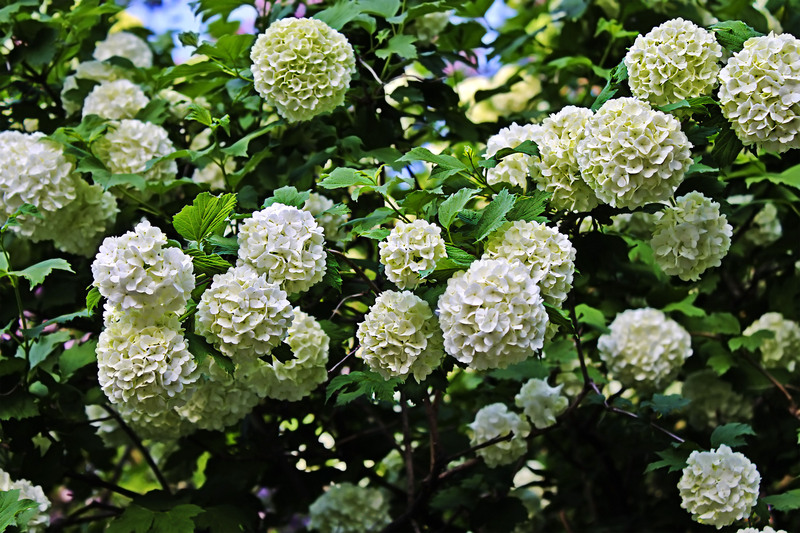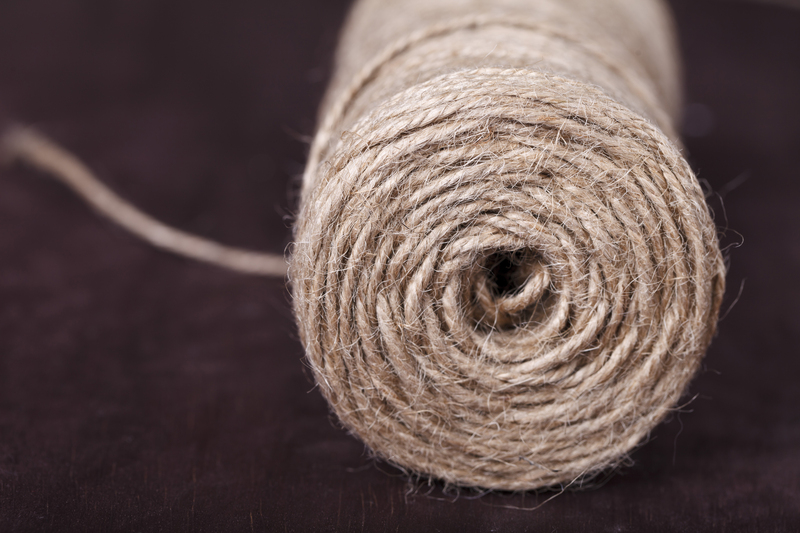The Essentials of Container Gardening
Posted on 09/06/2025
The Essentials of Container Gardening
Container gardening, also known as potted gardening or growing plants in containers, has seen a remarkable surge in popularity over the recent years. Whether you have limited access to green space, live in an apartment, or simply want greater flexibility and creativity in your garden design, container gardening offers an accessible, rewarding, and visually stunning alternative to traditional in-ground gardening. In this comprehensive guide, we'll explore the key components, helpful tips, and creative ideas that form the essentials of container gardening, ensuring you have all you need to embark on a flourishing gardening journey.
Why Choose Container Gardening?
Container gardens aren't just for those short on space. They have wide-ranging benefits:
- Flexibility: Move plants to follow the sun, shade, or adjust your arrangement with the seasons.
- Accessibility: Perfect for people of all ages or those with physical limitations -- gardening can be done on balconies, patios, or table tops.
- Style: Use vibrant pots and diverse arrangements for immediate curb appeal and creative expression.
- Pest control: Containers elevate plants, making it easier to prevent disease and insect infestations.
- Ideal for urban settings: Indoors or outdoors, containers bring greenery to apartments, rooftops, decks, and small yards.
Understanding why container gardening works is the first step in mastering the art of gardening in pots. With this knowledge, you can make choices that maximize your plants' health, beauty, and yield.

Choosing the Right Containers
The container you select affects both plant health and design aesthetic. Here's what to consider:
1. Container Materials
- Terracotta: Classic and breathable, but dries out quickly.
- Ceramic/Glazed: Durable and colorful, retains moisture but can be heavy.
- Plastic/Resin: Lightweight, budget-friendly and keeps moisture for longer.
- Wood: Naturally insulates roots, but may rot over time unless treated.
- Metal: Offers a modern look but can heat up quickly in direct sun.
- Fabric/Grow Bags: Great for root development, foldable for storage.
Important: Ensure all containers have adequate drainage holes to prevent waterlogged roots and rot.
2. Size Matters
A container garden thrives when plants have enough room for roots. Choose a container that's at least 8-12 inches deep for most annuals and herbs. For shrubs or vegetables like tomato, peppers, or eggplant, opt for pots 16-24 inches deep or larger.
Essential Soil Mixes for Container Plants
The right soil is fundamental to plant success in containers. Never use garden soil alone; it can compact and drain poorly in confined spaces. Instead, opt for a high-quality potting mix with the following elements:
- Peat moss or coconut coir: For water retention and lightweight structure.
- Perlite or vermiculite: Enhance aeration and drainage.
- Compost: Provides organic nutrients and fosters microbial activity.
- Slow-release fertilizer: Feeds plants over time for optimal growth.
Specialized mixes are available for succulents, orchids, or ericaceous plants like blueberries. Pick a mix tailored to your plant's specific needs for the healthiest results.
Picking the Right Plants for Your Container Garden
Selecting plants for container gardening is both fun and practical. The best plants for pots thrive in the relatively limited space and fluctuating moisture levels. Some excellent choices include:
Best Edibles for Containers
- Herbs: Basil, mint, chives, rosemary, parsley, and thyme.
- Leafy greens: Lettuce, arugula, kale, spinach, and chard.
- Vegetables: Cherry tomatoes, peppers, bush beans, radishes, eggplant, and compact cucumber varieties.
- Fruits: Strawberries, dwarf citrus trees, and blueberries.
Ornamentals and Flowers
- Annuals: Petunias, marigolds, impatiens, lobelia, verbena, and zinnias.
- Perennials: Hostas, lavender, sedum, heuchera, and ornamental grasses.
- Bulbs: Tulips, daffodils and crocus for seasonal color.
- Trailing or climbing plants: Sweet potato vine, fuchsia, nasturtium, clematis, or ivy.
Sunlight Needs and Plant Grouping
When growing a variety of plants together, choose those with similar sunlight and water needs. Most edibles require at least 6 hours of sunlight, while shade-loving annuals and ferns can thrive with much less.
Watering Techniques for Container Gardens
Proper watering is one of the essentials of container gardening. Containers dry out more quickly than in-ground beds. Here's how to keep plants hydrated and happy:
- Check soil moisture daily by inserting your finger up to the first knuckle. If it feels dry, it's time to water.
- Water thoroughly until it runs freely from the bottom drainage holes.
- Morning watering is generally best--plants absorb moisture before the heat of the day.
- Mulch the surface with shredded bark, straw, or pebbles to slow evaporation.
- Self-watering containers or drip irrigation systems can help maintain consistent soil moisture.
Signs of Overwatering or Underwatering
- Overwatering: Yellowing leaves, root rot, or fungal growth.
- Underwatering: Wilting or crispy leaves and stunted growth.
Tip: Containers exposed to wind and sun will need more frequent watering than those in shade or indoors.
Fertilizing Container Plants
Since potted plants quickly use up the nutrients in their limited soil, regular feeding is key. Here's how to ensure healthy, productive plants:
- Use a slow-release granular fertilizer mixed into your soil at planting time.
- Supplement with liquid fertilizer every 2-4 weeks, tailored to specific plant needs (for flowers, foliage, or vegetables).
- Compost tea can provide both nutrients and beneficial microbes.
Pay attention to each species' nutrient requirements, especially fruiting vegetables and flowering annuals, which are heavy feeders.
Creative Container Gardening Ideas
Making the most out of your container garden means using both practical and aesthetic creativity. Consider these ideas to add charm and function to your space:
- Vertical gardens: Utilize wall-mounted pots, hanging baskets, or stackable planters to grow upward -- ideal for small patios or balconies.
- Edible arrangements: Mix herbs, greens, and edible flowers in one colorful pot for both beauty and harvest.
- Salad bar planters: Grow all components for fresh salads in a few containers by mixing lettuces, radishes, cherry tomatoes, and herbs.
- Theme gardens: Try a Mediterranean pot (thyme, oregano, rosemary, lavender), pollinator pots (zinnia, salvia, coreopsis), or a shade oasis (fern, hosta, impatiens).
- Repurpose vessels: Get creative with vintage crates, baskets (lined with plastic), old boots, or tin cans--just ensure they have proper drainage.
Overcoming Common Container Gardening Challenges
Even experienced gardeners face setbacks. The good news is, most container gardening problems have simple solutions:
- Root-bound plants: When roots circle the pot, it's time to repot into a larger container and trim excess roots.
- Pests: Aphids, spider mites, and snails are common. Use organic sprays, introduce beneficial insects, or wash leaves with soapy water.
- Diseases: Avoid overcrowding, ensure adequate airflow, and remove dead or diseased leaves quickly.
- Soil compaction: Refresh soil yearly and use lightweight mixes to maintain drainage and aeration.
- Nutrient depletion: Top dress with compost and regularly fertilize as outlined above.
Transitioning Your Container Garden with the Seasons
One of the joys of container gardening is the ability to update your display as the year unfolds:
- Spring: Start with cold-tolerant pansies, violas, and bulbs.
- Summer: Replace early flowers with sun-loving annuals or tomatoes for vibrant displays.
- Autumn: Add mums, asters, ornamental kale, and pumpkins for fall color.
- Winter: Use evergreen branches, winter flowering plants, or transition indoors with houseplants.
Tip: Portable pots can be moved into sheltered areas during storms, intense heat, or frost, giving you greater control over your plants' environments year-round.

Troubleshooting and FAQs for Container Gardening
1. Why are my container plants not thriving?
This could be due to insufficient light, underwatering or overwatering, lack of nutrients, or root crowding. Assess location and care, then adjust accordingly.
2. How often should I change the soil?
For annuals and edible crops, it's best to refresh the potting mix every year. For perennials, top dress with fresh compost and replace soil every few years.
3. Can I reuse old containers?
Absolutely! Wash old pots thoroughly with a mild bleach solution to remove pests and diseases before replanting.
4. Should I use saucers under pots?
Saucers are useful indoors or on decks to prevent water damage, but be sure to empty them promptly to avoid root rot.
5. What's the best way to fertilize container vegetables?
Use organic or balanced liquid fertilizer every 2-3 weeks for best results, and mix slow-release granules into the potting mix upon planting.
Conclusion: Start Your Successful Container Garden Today
With these essentials of container gardening, you're poised to create thriving, beautiful potted gardens anywhere. By choosing the right containers, soil, plants, and techniques, you can experience all the joys of gardening--regardless of available space--while minimizing challenges. Whether you're growing a culinary herb collection on your windowsill, decorating your patio with blooms, or harvesting vegetables on your balcony, container gardening offers endless opportunities for growth and creativity. Embrace these essentials, experiment with your own unique arrangements, and watch your urban oasis flourish!
Ready to try container gardening? Share your favorite container gardening tips or questions in the comments below and join the thriving community of passionate potted plant enthusiasts!

